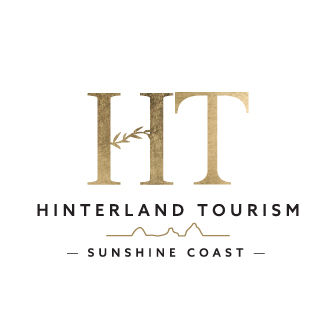
Woombye
Woombye
Woombye is located on the Sunshine Coast hinterland in Queensland. The name is derived from words from the local Aboriginal language – a place (wumbai) of black snake or (wambai) black myrtle or axe handle made from black myrtle. The relaxed and social lifestyle is complemented with the famous pub, the bowls club, and the local tennis courts. Woombye is home to one of the longest established soccer clubs on the Sunshine Coast, the Woombye Snakes and is also the location of a tourist icon The Big Pineapple.
The iconic Big Pineapple is back, up and running. This heritage-listed tourist attraction originally opened in 1971 has a renewed presence in the town. You can again climb the Big Pineapple, explore the process of pineapple farming and enjoy the fabulous views of the observation deck. Don’t forget the train ride and visit the café for a step back in history!
Also not forgetting the Wildlife HQ Zoo (previously the Alma Park Zoo). They moved to their permanent home at the Big Pineapple in 2014. The Zoo accommodates over 200 animals and the keepers are focused on providing lifetime care for the animals whilst educating families and children about our environment and conservation.
History
Woombye began as ‘Cobb’s Camp’ in the early 1870s. Cobb’s Camp was established by Cobb & Co, which ran a coach service between Brisbane and the Gympie goldfields in late 1867. By the end of 1868 Cobb and Co coaches were travelling three times a week between the two locations. The company established a staging post between Lander’s at Mooloolah and Low’s Maroochie Hotel at Yandina. James Costar acquired a 20-acre (8 hectare) homestead selection in June 1869 and erected accommodation for travellers. It was licenced in 1870 as the ‘Nil Desperandum Hotel.’ Cobb and Co quickly built their own eight-bedroom hotel and store in 1871, licenced as ‘Cobbs Camp Hotel’, putting Costar out of business.
Farmers taking up land at Cobbs Camp had cleared the timber and planted sugar cane by 1871. New plantations were still being planted a decade later, and a sugar mill was planned. More than 200 acres of cane had been planted between Cobbs Camp and Petrie Creek on the expectation the mill would be crushing in 1885. However its proposer reneged on the deal, leaving unhappy farmers much out of pocket. Sugar cane was abandoned, and replaced by fruit, due to a prolific growth of oranges observed on a tree at the police station in 1885, the same year the Cobbs Camp State School opened. Woombye came into use as an alternative and permanent name for Cobb’s Camp during 1888 with the town surveyed in 1889.
The town began to develop in the 1890s along Blackall Street: a police station and court house was erected in the early 1890s, St Margaret’s Anglican Church was built in 1898, John Tytherleigh of Landsborough opened a general store in the same year and the School of Arts and Criterion Hotel were erected in 1900. The police station and court house were removed to Nambour in the late 1890s. A station on the North Coast Railway was opened in 1891, supplementing a road which was often impassable between the town and Mooloolah. The railway provided a quick method of getting produce to markets to the south and north, and did much for the fruit industry and the local economy. The first commercially successful crop of pineapples was grown at Woombye in 1895, and the town embraced the crop. Bananas were also planted but phased out in the early 20th century. Citrus crops had also reduced in size by the 1930s. Woombye now belonged to the pineapple.
The town’s population peaked just after World War II and declined significantly over the next three decades as the fruit industry struggled. It hit a low in the 1970s, and was rescued in part by the establishment of the Big Pineapple tourist attraction, which after closure in 2010, was revitalised in 2015. Like many of the railway towns in the Council area, Woombye has experienced a significant population boom since 2001, the appeal of relaxed rural lifestyle and low housing prices contributing to that growth.
History Source - 'Thematic History of the Sunshine Coast', Sunshine Coast Heritage Study, Sunshine Coast Council, August 2019

